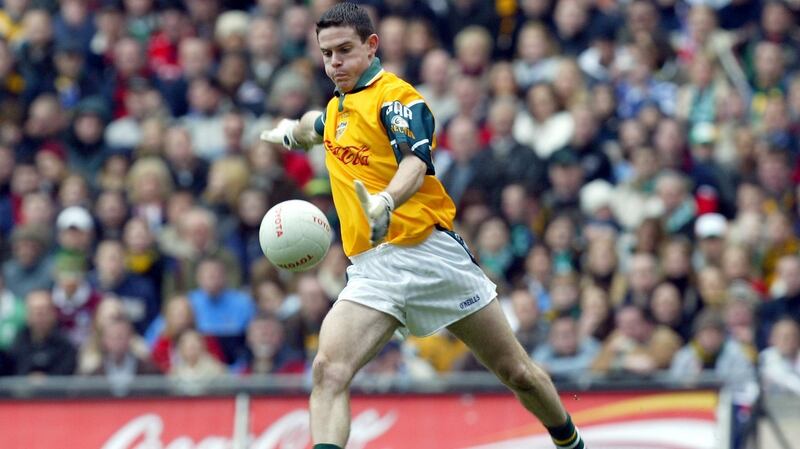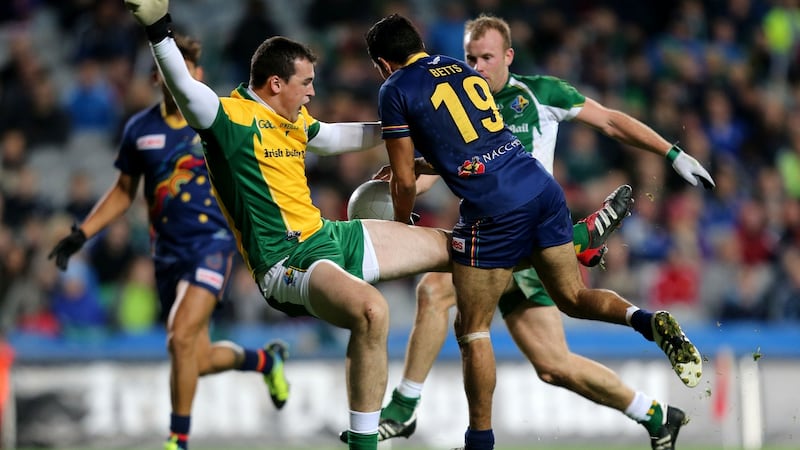It seldom attracts the attention of other more obvious examples but the goalkeeping position is one of the aspects of the international game that confers a significant advantage on Ireland.
The Australian game doesn’t have nets or a specialist minder of the goal area and so every series they have to improvise with an outfield player.
So when one is identified, they tend to be keen to hang on to him. As a result of his acumen between the posts Dustin Fletcher became a fixture there for five series in 2005, '06, 2010, '14 and '15.
With no real issues about finding a goalkeeper, Ireland have tended to rotate the position and no Irish number one has played five series. Stephen Cluxton comes closest with three and a half, having been called up for his first cap in the second Test in 2002 and for three subsequent series.

Those seven caps place him joint-top of the most appearances for a goalkeeper, along with another Dubliner, John O’Leary who had the advantage when he played when there were three tests in a series.
O'Leary was one of the first players used in the inaugural official tests of 1984 when the decision was taken to give three different goalkeepers an opportunity and O'Leary shared with Kerry's Charlie Nelligan and Offaly veteran Martin Furlong.
It became apparent that the demands on the position in the international game were different than in football, as the most successful exponents tend to play more like seventh defenders and given the importance of the mark and the dangers involved in kicks not going to hand, accurate restarts have always been vital.
Tyrone's Niall Morgan is the 15th stopper used by Ireland and made his debut in the one-off Test in Croke Park two years ago but he was selected for Australia the previous year along with Meath's Paddy O'Rourke.
Morgan recalled the strange feeling of being brought out three years ago without knowing whether he would get to play at all.
“Paddy O’Rourke played in 2013 and 2014. The two of us came out not really knowing who’d be playing. It was great to be involved the whole way, through the notion that I might be playing. I found out the day before the game I wasn’t and it did take away from it a bit but it was an unbelievable experience, knocking about with boys of (Conor) McManus and (Aidan) O’Shea’s calibre.”
Ireland have rarely opted to use up a touring place with a back-up in the position, which made Morgan's experience in 2014 very unusual. This hasn't so far caused trouble with injuries but in 2005, when Michael McVeigh's kick-outs got into trouble, manager Peter McGrath put Dublin centre back Bryan Cullen in goal for a period in the second test.
Loss of form could therefore be an issue for a player in the unusual situation of being guaranteed his place for the entirety of a match.

“It’s good to not have the pressure but you still have to perform,” says Morgan. “There’s no point coming out here and messing about and maybe losing a test for the team by you not being up for it as much as the rest.”
For him the desire to be a part of the international team creates its own incentive. His mother and father are coming down to see him play for Ireland and that has an effect.
“It’s a proud moment for them, coming to Australia to see their son playing for Ireland. I know there are a few Edendork people out here that’ll be at the games as well. I’ll not be easing off. You expect high standards and I’d hate for anyone to take the shoe off the pedal just because everyone knows they’ll be part of the tests.”
There has been a focus on the position already with manager Joe Kernan very mindful that the Ireland kick-out was attacked two years ago by the bigger Australians pushing up. As a result the current panel is taller than average for the international game and considerable emphasis is being placed on securing the restarts.
“We haven’t really done much kick-out work so far,” according to Morgan. Dermot [Earley] talked to me there now about doing a bit over the next couple of days and getting it settled. They probably didn’t want to do too much on it until the squad was picked.
“The Australians will bring something different. The last time they packed everybody between the 45s and said ‘yous aren’t going to catch and we’ll scrap yous for the break’. That’s effective for them and I wouldn’t rule out them going with something similar.”
He believes that kicking from the ground gives Irish goalkeepers an advantage.
“I’d rather kick from the ground. From their point of view too, they’ll find it more difficult because they only ever kick from the hand so it’d be a different flight on the ball. Their ball’s always going straight and it’s more of a loopy, hanging kick. I’ll probably go from the ground more often and see if we can make it hard for them to react.
“We’ll be less naïve this time; we’ll probably have a few things we’ll have worked on between now and then.”
















